Dadia National Park
When our guide Victor Romagnoli and I were planning the Via Egnatia tour we both agreed that we wanted to include as much natural history as possible. Since we are both avid birders visiting Dadia-Lefkimi-Soufli Forest National Park or just Dadia National Park as I’ll call it in this post, was a no brainer. It is famous for its birds of prey as well as three out the four species of vultures found in Europe. This is actually where we headed once we completed our somewhat hairy crossing of the border from Turkey into Greece rather than directly to the city of Alexandroupoli as I wrote in the last post. I blame the mistake on my Covid fevered brain, but there really is no harm as what I wrote about Alexandroupoli is accurate, just a little ahead of its time.
So back to Dadia National Park.
Dadia National Park
Established as a national park only in 1996 Dadia National Park was designed to protect a unique ecosystem that was home to one of Greece’s largest mixed pine and oak forests. Comprising 428 sq. kms. (165 sq. miles) it was on the tentative list for inscription as a UNESCO World Heritage Site. This is how Victor described it in the Via Egnatia itinerary – The forest itself is something beautiful and rare in this part of the world. And so it was until a few months after our visit the largest forest fire ever recorded in the EU broke out and destroyed virtually the entire forest and threatened the city of Alexandroupoli. So the description of our visit to this once magical place is not what one would experience today. Not by a long shot.
This is a map showing the park boundaries in green. Also note the green triangular shape below it. This is the Evros Delta which we will be visiting next on this Via Egnatia tour. The two spots have a direct connection with what happened at Dadia National Park.
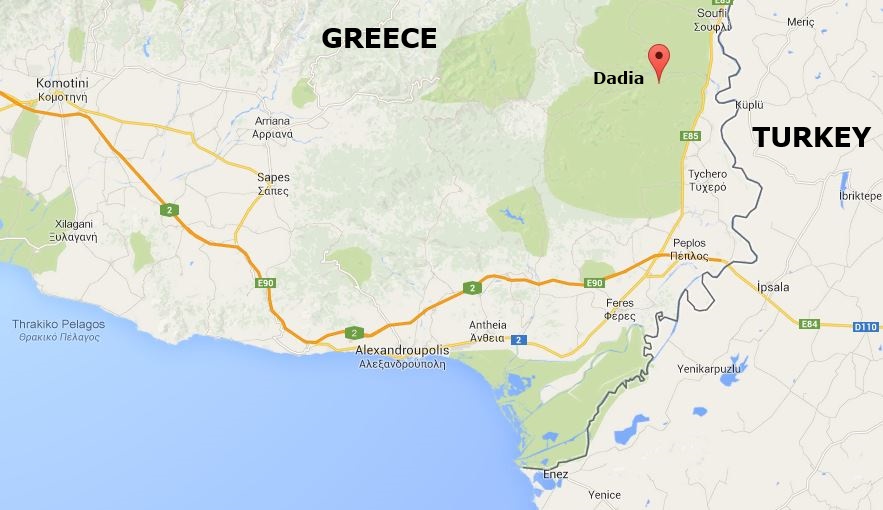
Our visit to Dadia National Park took place three months before it was largely destroyed, but Greece is no stranger to forest fires. There were clearly signs of previous fires in the park as we made our way to the interpretive centre and our accommodation in the park. But mostly, it looked like this. Why the 2023 fire was so devastating is largely because of the extreme heat which is becoming a yearly event in the Mediterranean and likely a harbinger of worse to come. The 2023 fire also had tragic consequences for over 20 asylum seekers who used the forest as a place to hide from authorities after crossing over from Turkey by way of the Evros delta. Their charred and largely unidentified remains were found after the fire was put out. Whether or not cooking fires laid by this group was the cause of the fire is speculation, but it has happened in the past. If so, they paid a terrible price.
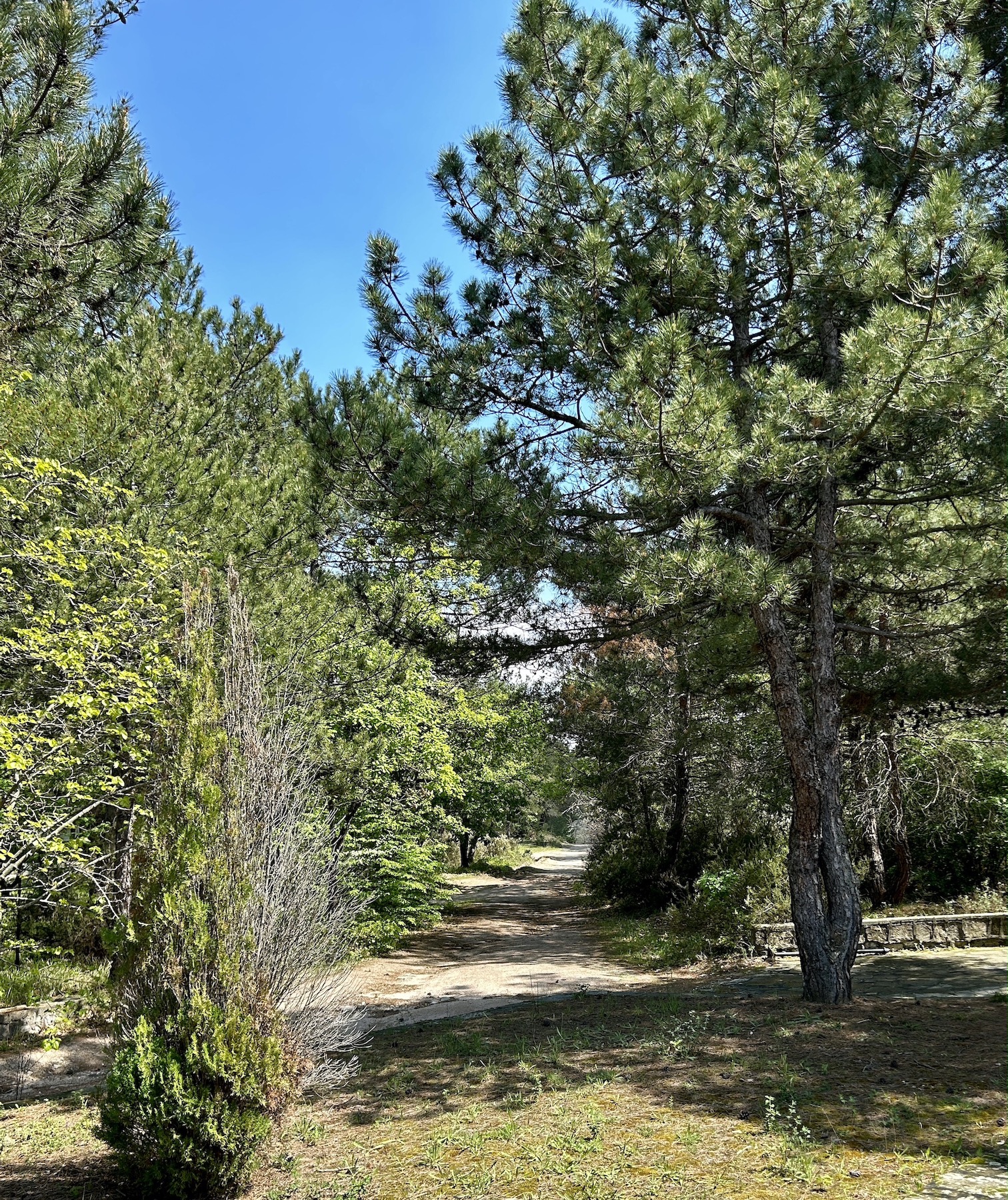
Forest Inn
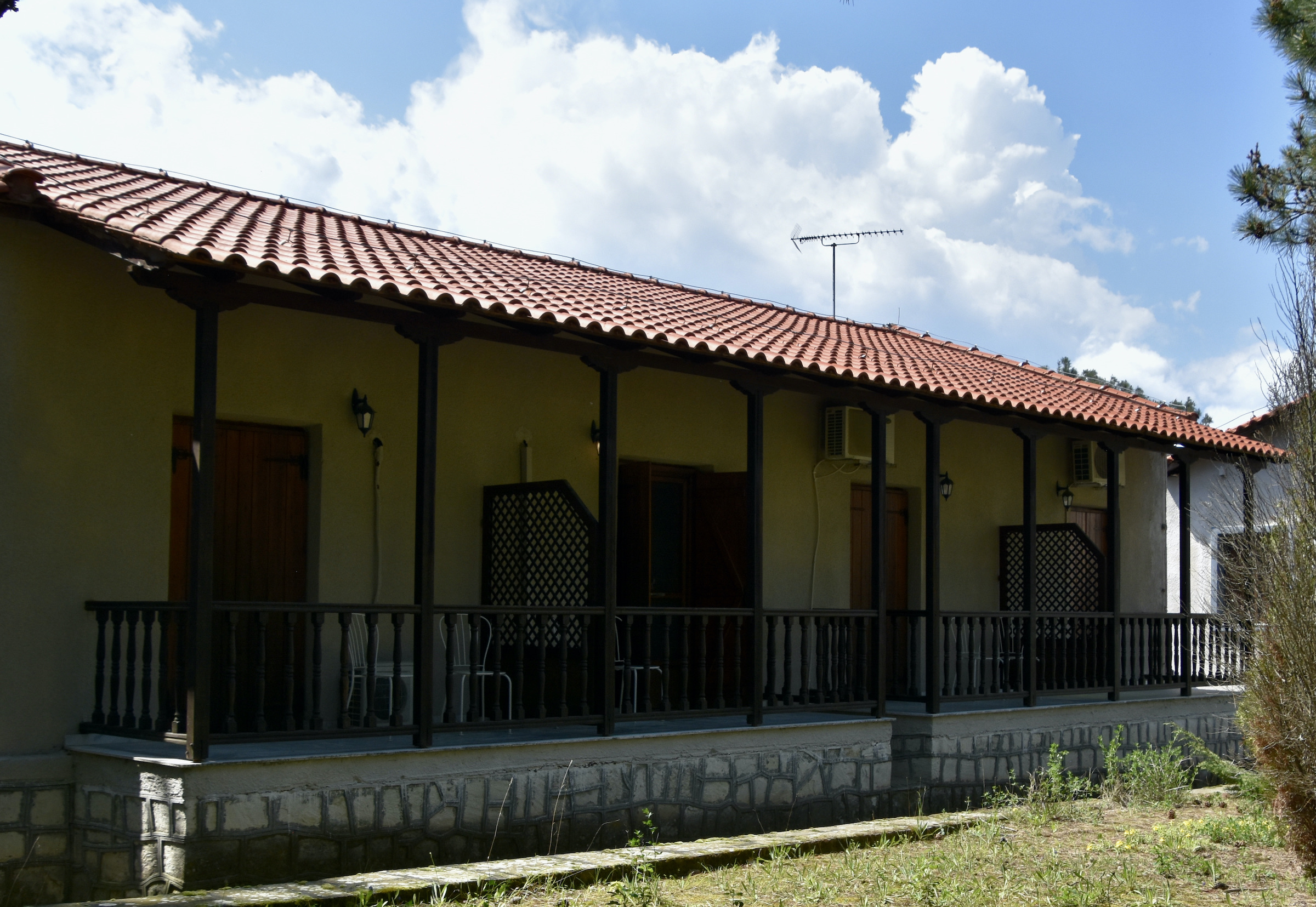
There was only one place to stay within Dadia National Forest, the Forest Inn which has twenty rustic, but clean and comfortable units of which our group took up most of them. I was fully expecting to find that it had burnt to the ground, but its Facebook page indicates that it’s still there and booking guests. I am thankful for them as it is a wonderfully quaint place to stay. I also found this photo on the Facebook page. That’s the owner with her arms outstretched.
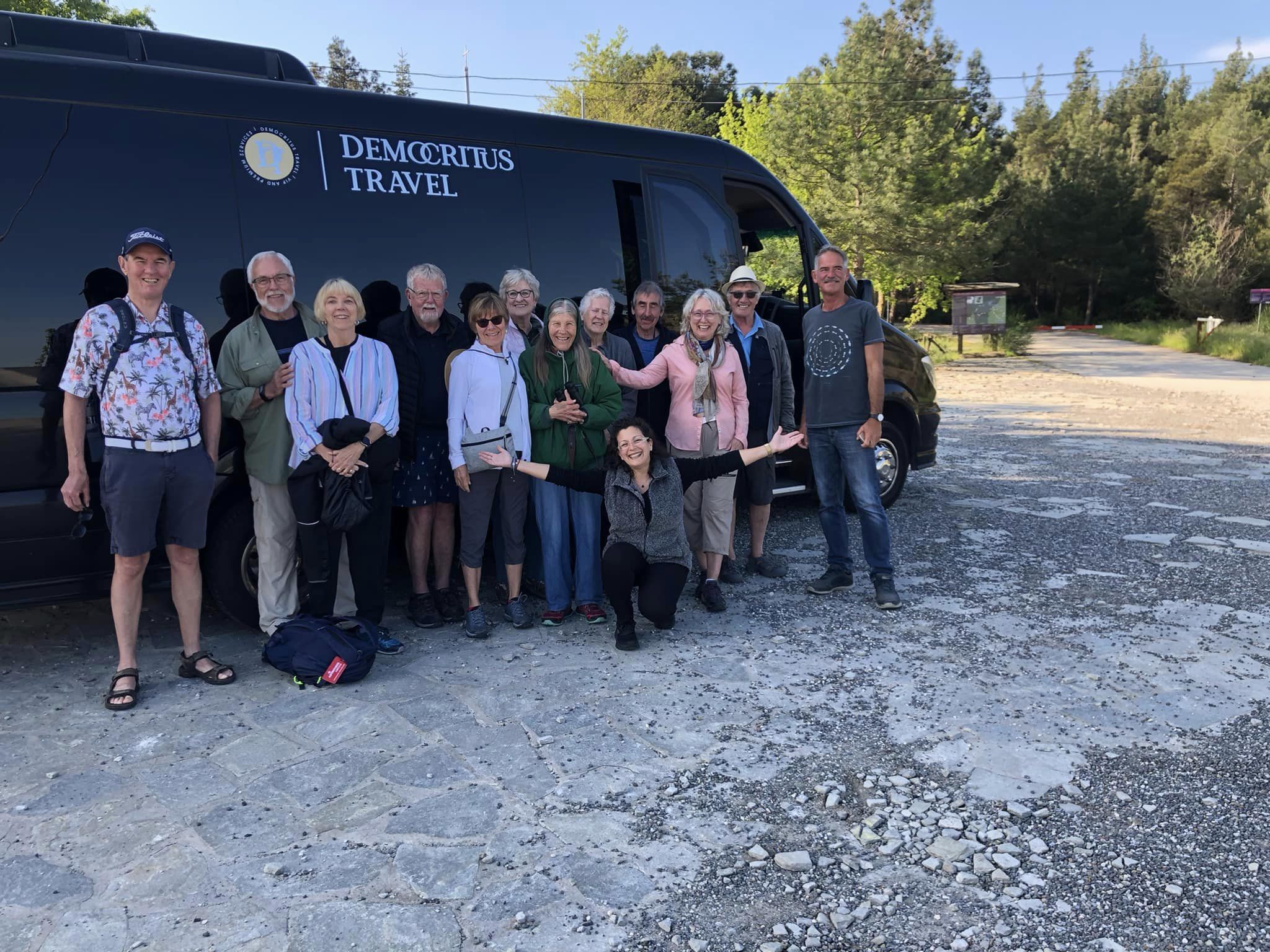
Outside the interpretive centre is this metal sculpture of the three types of vultures to be found in Dadia National Park.
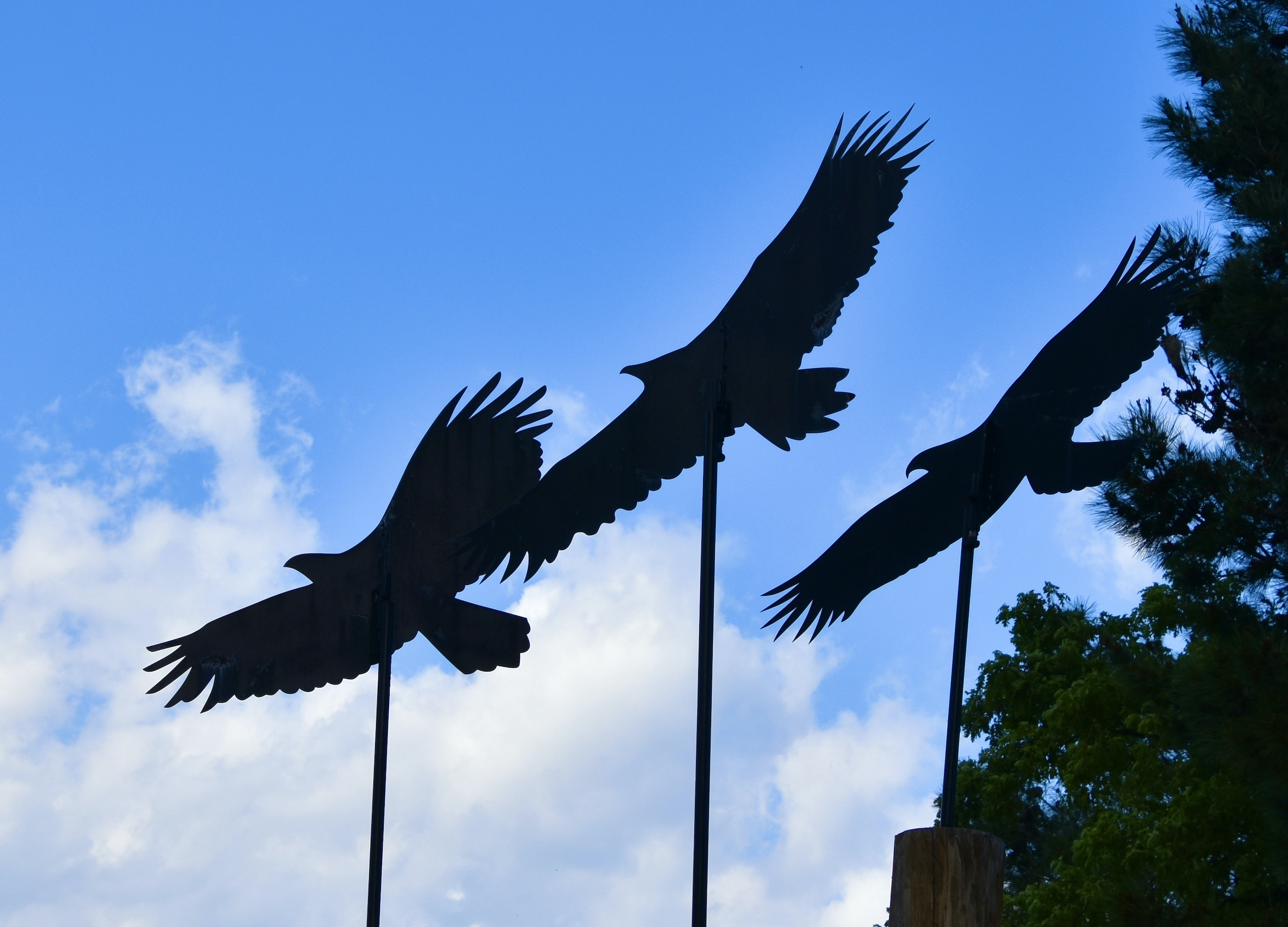
Since our delay at the border had us arriving later than expected we only had time for one outing before sunset. This was to a petrified forest near the small village of Lefkimi where an elderly gentleman showed us around the small museum before we set out on our own to look for petrified trees.
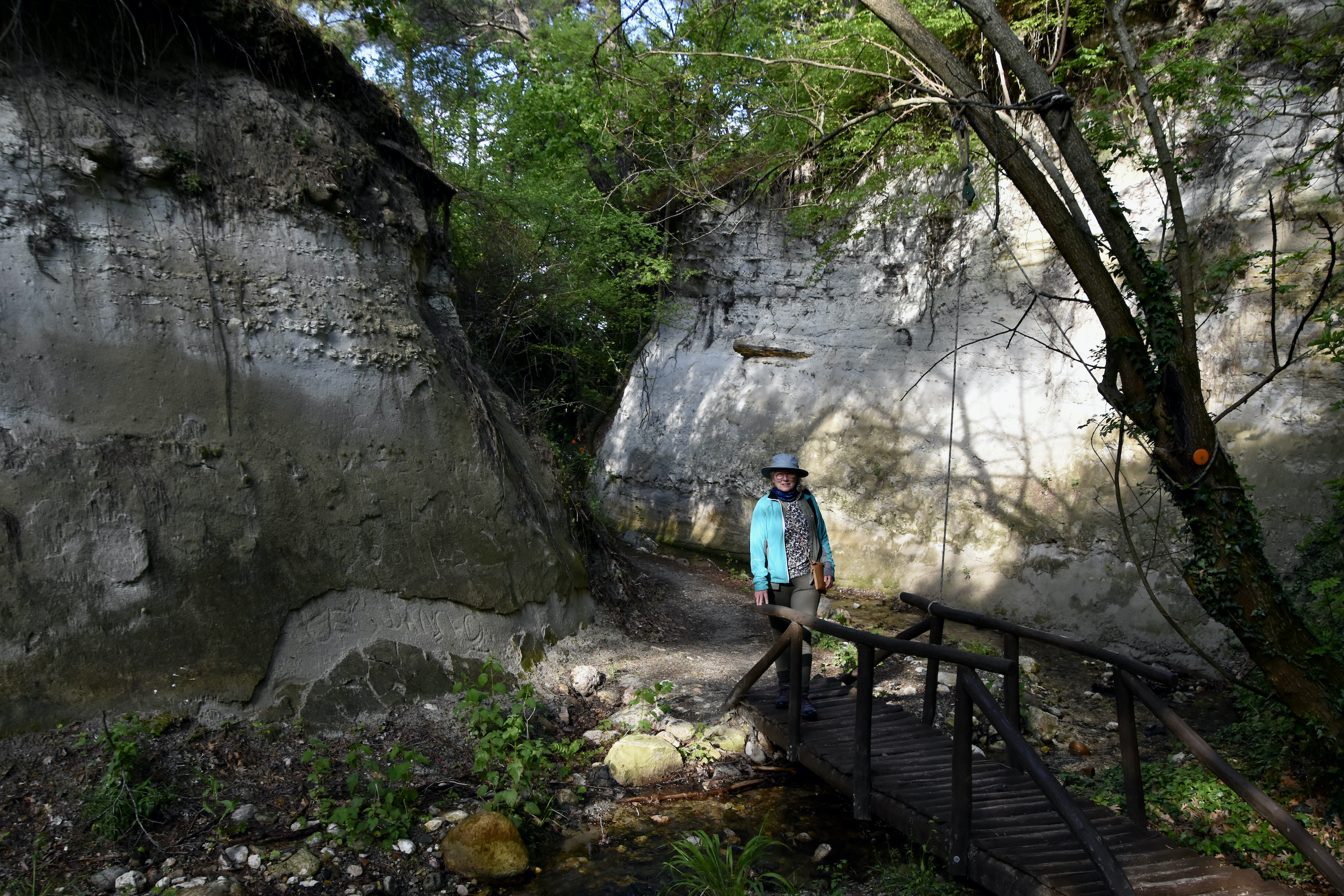
The trees got petrified here as the result of volcanic explosions that engulfed them in tuff, a soft rock made of volcanic ash. The tuff then erodes away exposing new trees every year. That’s Alison walking through a narrow gorge with the tuff on both sides. By looking closely you could see remnants of the 25 million year old petrified trees emerging from the tuff.
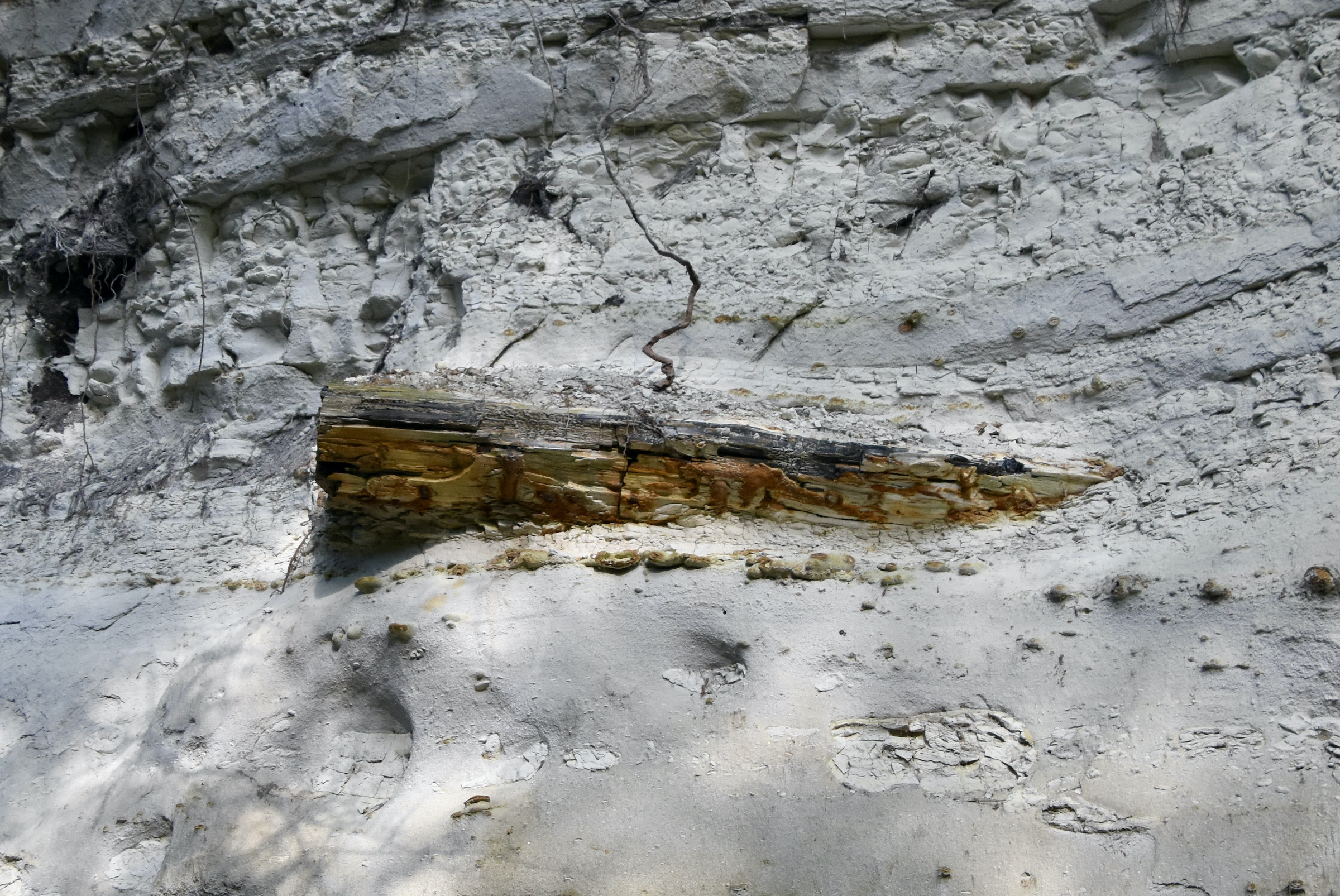
Others had already broken free and were littered around the area like the bones of ancient dinosaurs. While the dinosaurs were long gone when these trees were alive, the forest would still have been home to sabre-toothed tigers, early elephants, giraffes and hyenas.
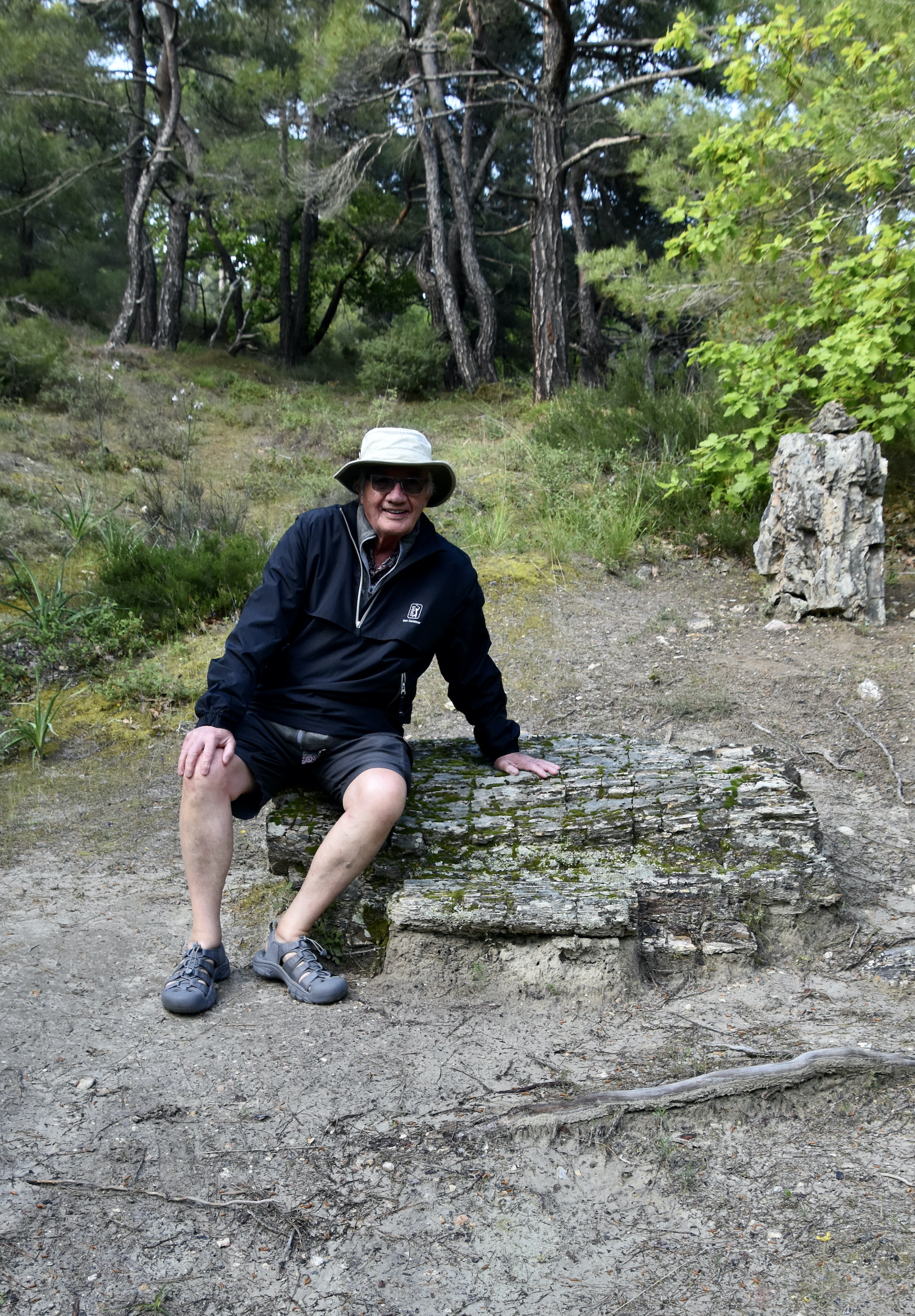
We returned to the Forest Inn for a very fine communal meal before hitting the sack after a very full day that started in Edirne and ended in this arcadian forest.
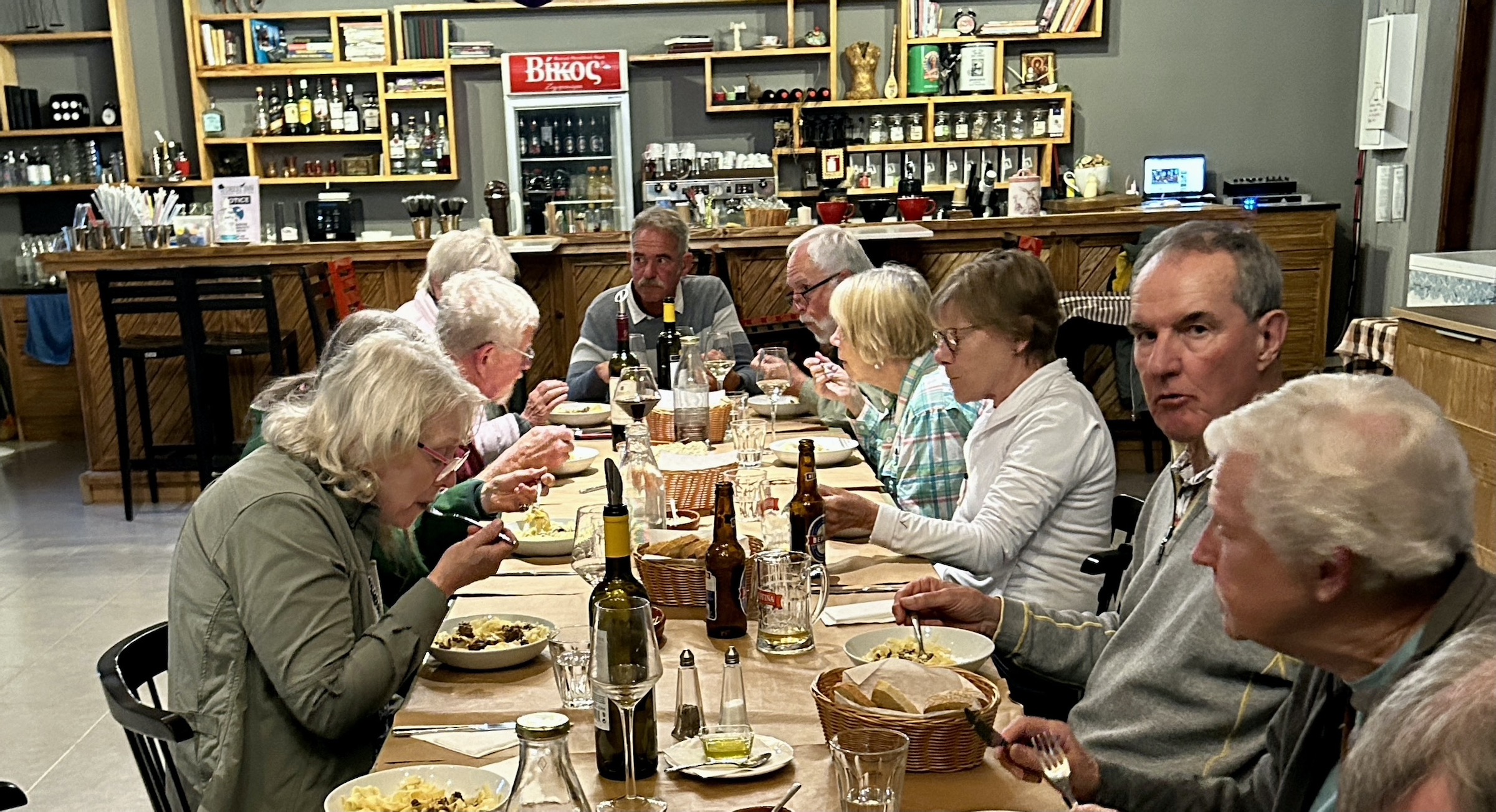
In the morning Alison and I got up early to go for a walk in the woods of Dadia National Park.
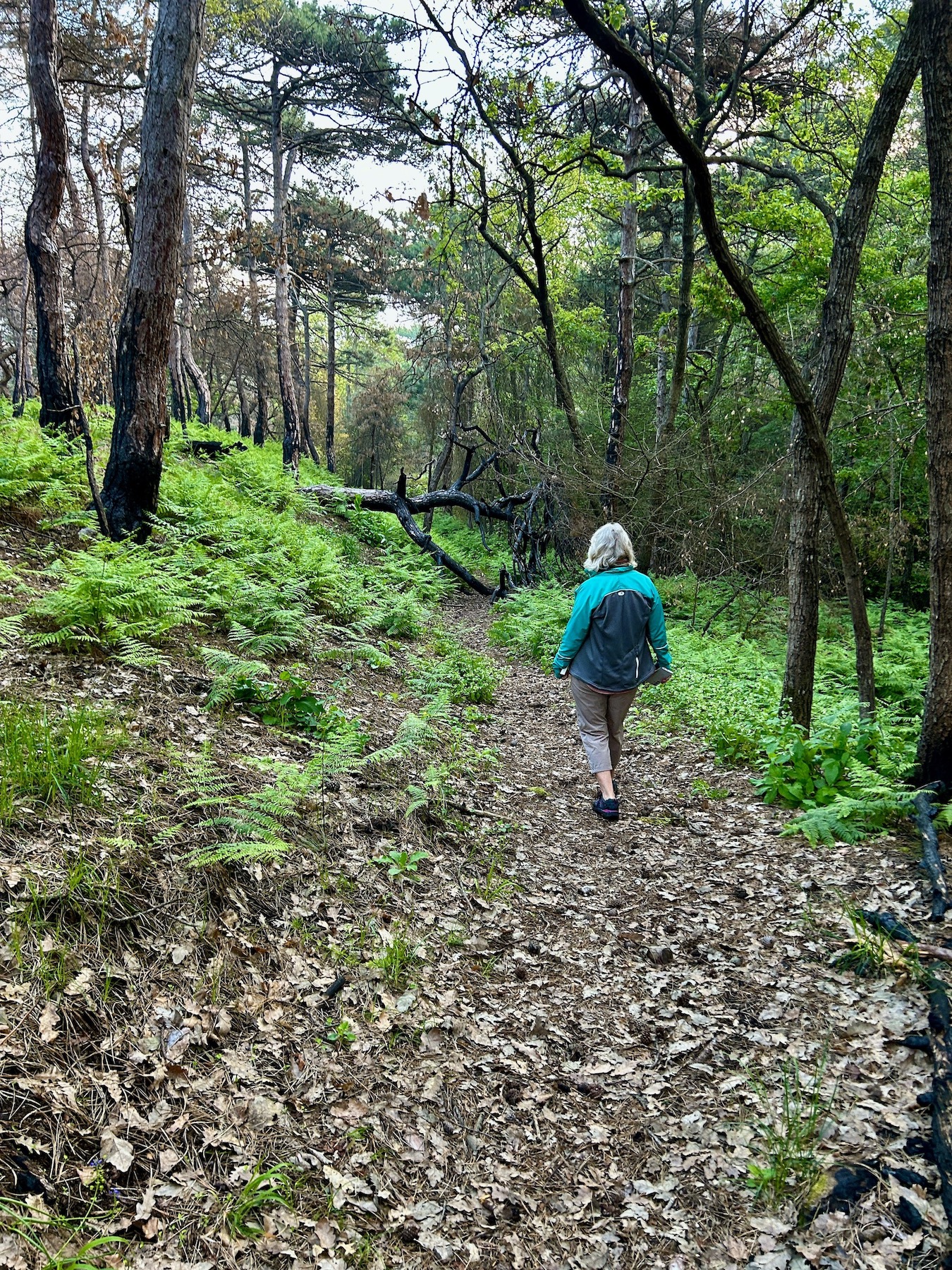
The sun was just cresting over the Evros Mountains when we reached this stretch that had been burnt over the year before.
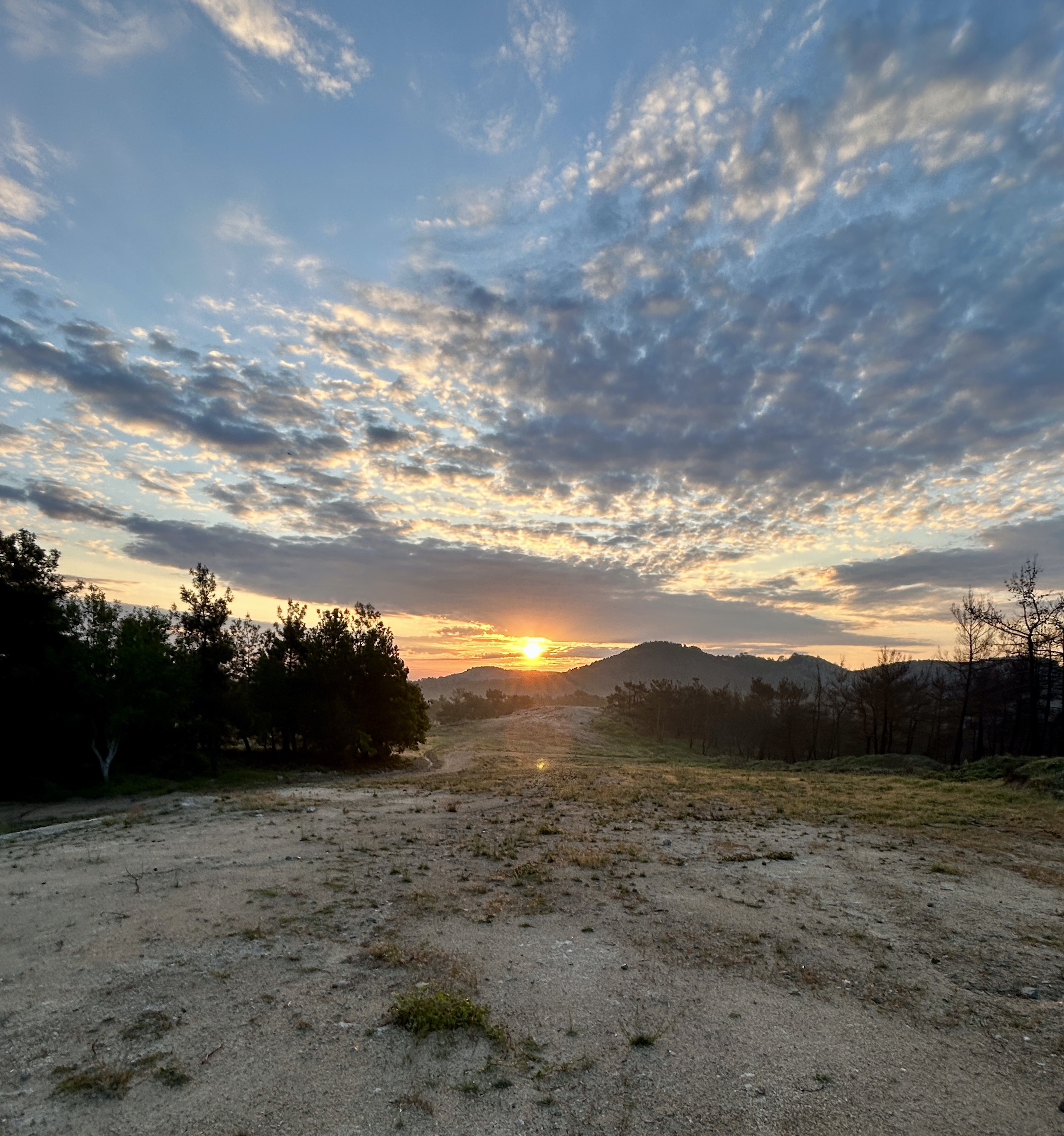
However, there were signs of resurrection everywhere.
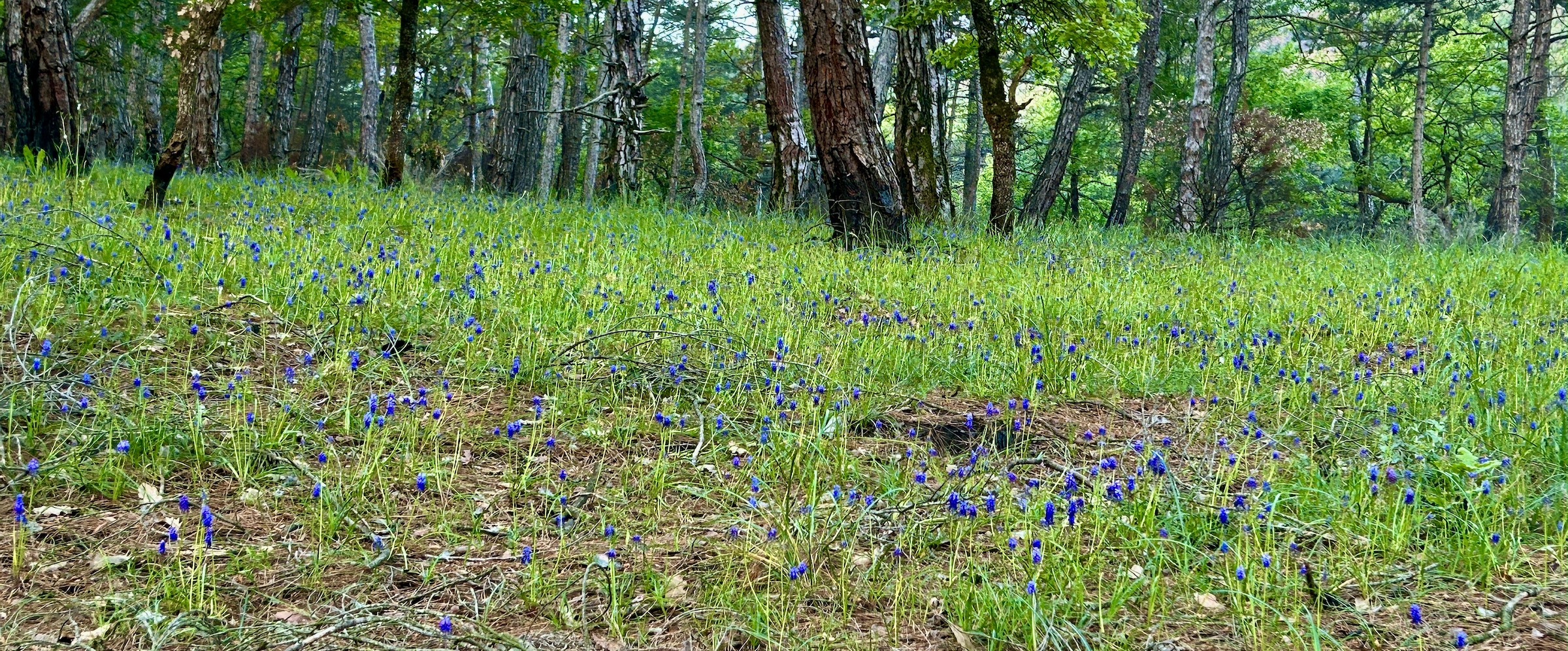
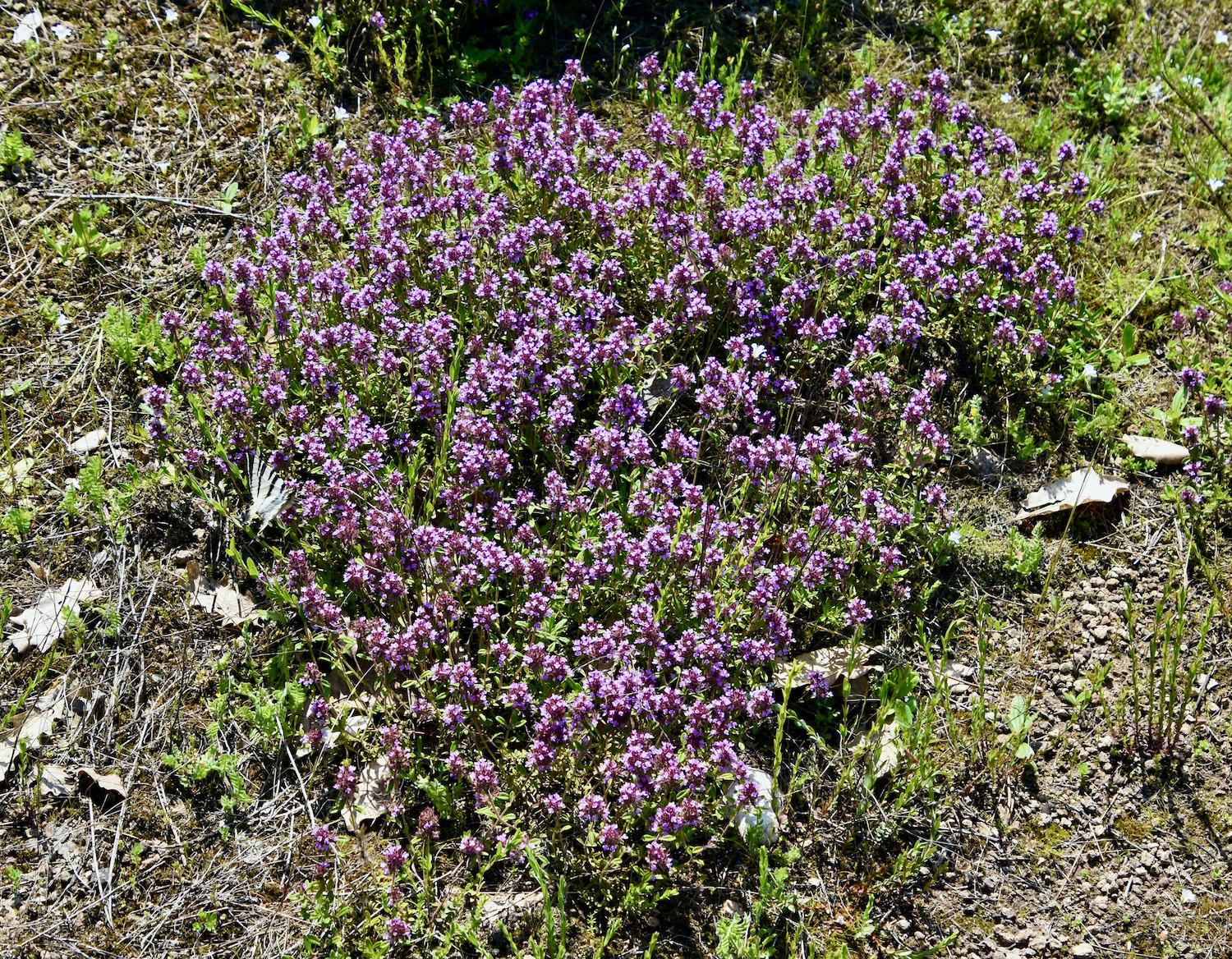
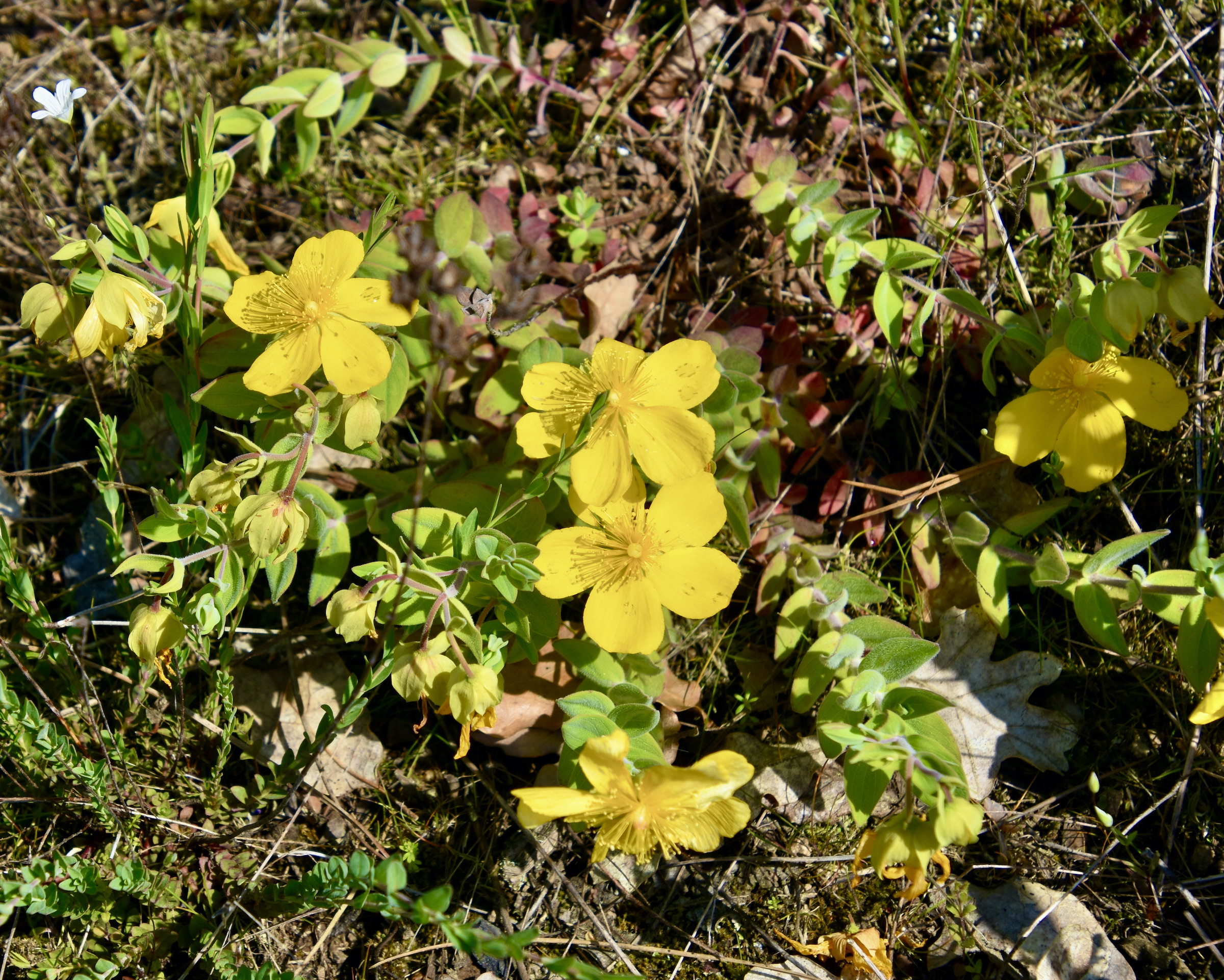
There was also birdsong coming from many different species and overhead I did spot a couple of Egyptian vultures. So I can only hope that Dadia National Park recovers in due course. It will if permitted to, but it will take a long time and I am just grateful to have seen it before the summer of 2023..
In the next post we’ll head to another area steeped in controversy in 2023, the Evros Delta. I hope you’ll join us there.

